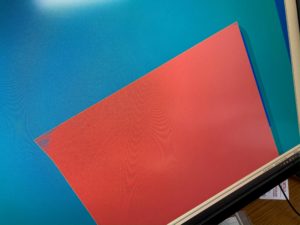4 Prototype Model Design for Manufacturing (DFM) Tips
Prototyping is all about discovery. It’s an iterative process that allows you to finetune an idea until it’s the best it can be.
As bonafide prototype machinists, we transform many prototype drawings into tangible products, and we can often recognize design flaws before machining ever begins.
If you want to bypass some of the trial and error of prototyping, take a look at our top Design for Manufacturing (DFM) tips to save time on your prototyping journey.
DFM Tips for Prototype Models
1. Consider your material during tolerancing
Plastics and metals behave differently during machining, so your tolerances need to be adjusted accordingly. If you’re looking for a press fit between two parts, keep in mind that in general, you’ll need slightly tighter tolerances for plastic than for metal. If your tolerances are too loose, you could end up with a slip fit instead. On the other hand, if you over tolerance your metal parts, you could end up with a press fit that’s too tight and causes part deformation during assembly.
To prevent any tolerancing issues, KAD will examine your design and material selections before prototype CNC machining to guarantee a successful outcome.
2. Modify interfering geometries
Looking at your 3D prototype model and 2D drawing, we can see if the design includes any features that are difficult to machine, such as undercuts or square inside corners. Machining square interior corners is possible, but doing so often requires expensive custom tooling.
One alternative to machining perfectly square corners is to make a small fillet (i.e., a rounded corner) that attaches to a separate, right-angle chamfer.
If you need square corners, we can broach the part using a toothed tool to cut material at a 90-degree angle. However, keep in mind that custom tooling will increase cost and lead time.
Another option is adjusting the design to provide relief for tooling. This technique—known as “Mickey Mouse ears”—involves designing a filet shaped like one of Mickey’s ears on the inside square corner, allowing tooling to approach the sharp edge from the inner diameter for a more precise cut.
We’ll run a fit test to ensure that all complex geometries meet your expectations no matter which of these methods you choose.
3. Test mating parts
Sometimes stock components have looser tolerances than what we customarily manufacture, resulting in mating parts fitting together poorly during assembly. If, for example, you want to join a stock outer diameter (OD) thread with a stock inner diameter (ID) thread, we may need to make some minor adjustments to the stock component for optimal fit.
If you’re concerned about the functionality of your assembly, be sure to supply all mating parts so we can conduct adequate testing.
4. Provide pricing guidance for material selection
We’re happy to provide recommendations to help you cut costs on materials.
Sometimes customers choose plastic as their material, thinking it will be more cost-effective than metal—but this assumption isn’t always accurate. If you tell us the part application and environment, we can suggest a material that will give you the most bang for your buck.
The prototype CNC machining process provides you a chance to improve your part before production. Still, we believe you should always start with your best foot forward—and we won’t let you take any unnecessary risks. We’ll gladly help guide you to prototyping success the first time around. Request a quote today to work with us!



